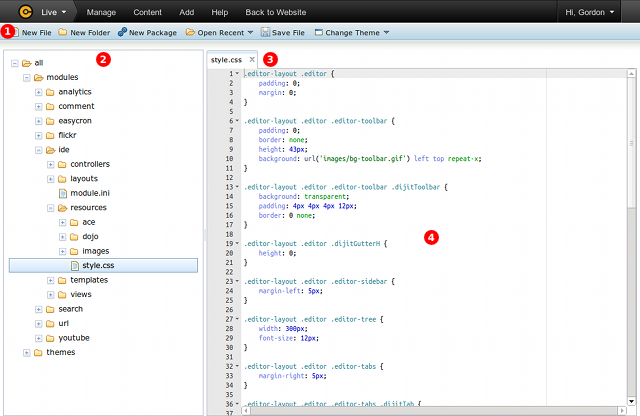The optional IDE module provides an interface to edit theme or module files via your browser. This is useful when you only have browser-based access to Perforce Chronicle. This module needs to be enabled before you can use it. Please see Section 19.3, “Enabling and Disabling Modules” for more details. Also, the web server user needs to have write access to the files in the "sites" folder within your Chronicle installation in order to save any changes made.
The IDE module's editing capabilities are powered by the ACE Javascript Editor, which provides features such as:
![[Warning]](images/warning.png) |
Internet Explorer |
|---|---|
The IDE module's editing interface does not currently work in Internet Explorer 7 or 8. It does work in Internet Explorer 9. |
Once enabled, choose Manage > IDE to display the IDE interface:

![[Note]](images/note.png) |
Drag-and-Drop Active |
|---|---|
With a supported browser, you can add or replace files in a directory by dragging them from outside your browser onto the desired folder in the directory tree. |